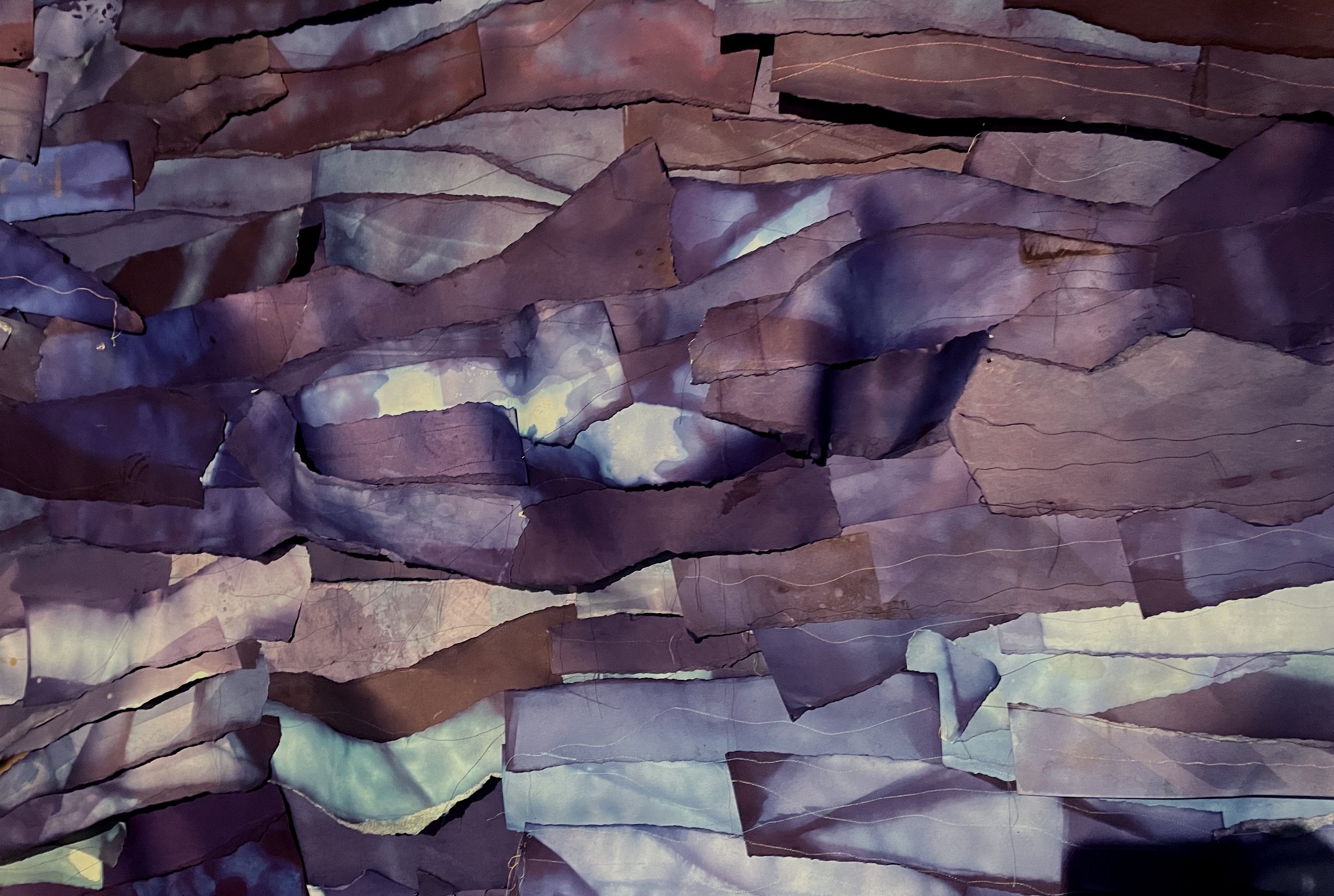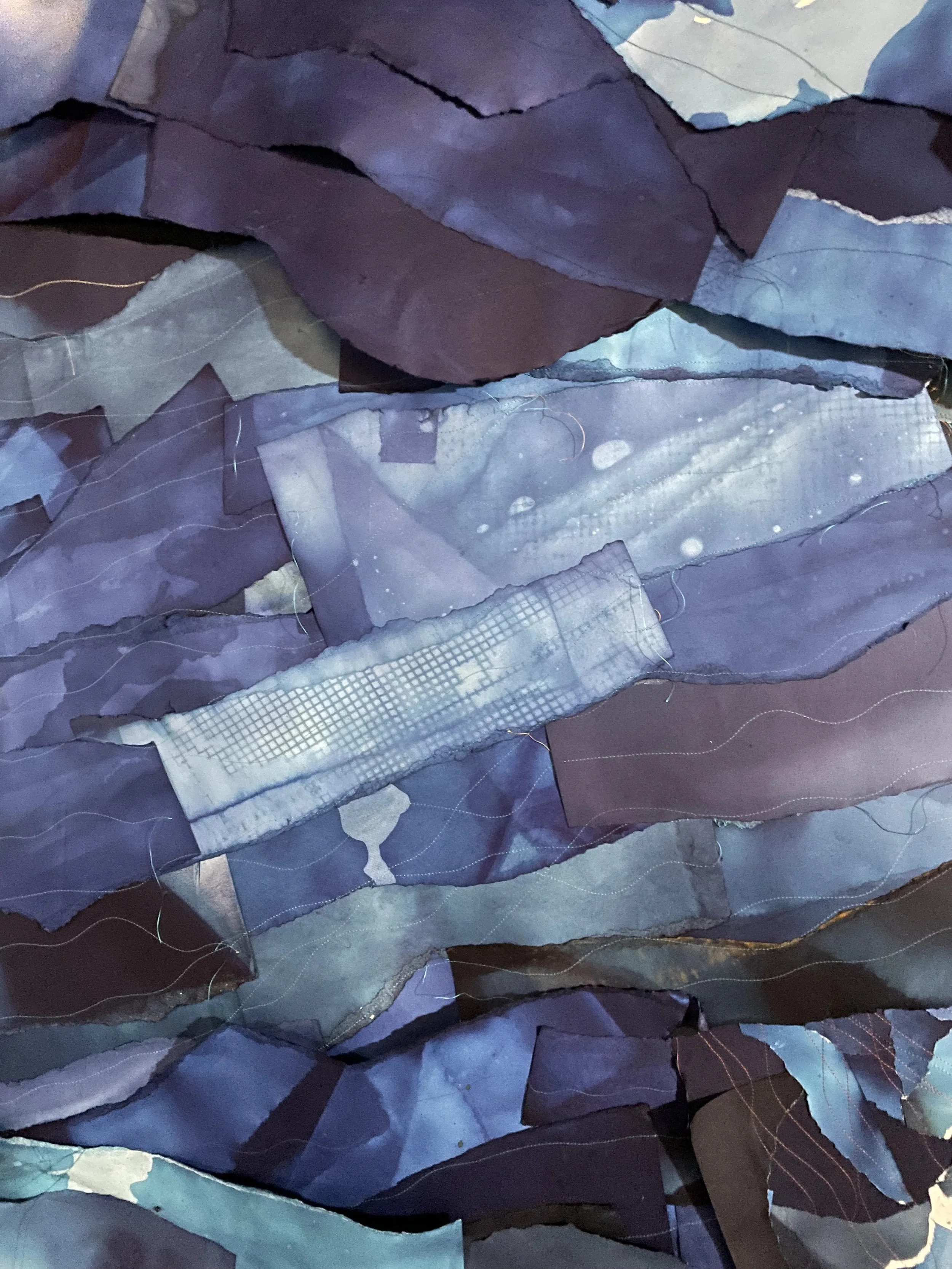
Our work explores, analyzes and details the ways that oppression works through accumulation in and through the urban landscape. We start with the premise that racial capitalism, white supremacy and racism work and rework the ground and that they are made, literally and symbolically, in and through the geography of the city and its development over time.
In our first collective project, we focused on New Orleans, Louisiana
Through visual representation and materiality, each tapestry in the first part of our New Orleans exhibition portrayed a temporal variant of racial capitalism, putting it in conversation with the accumulations of racialized ground from the past. These tapestries follow the city’s history from a wetland and gathering place for Indigenous peoples to the arrival of ships bearing enslaved Africans; from the division and drainage of the land into cash crop plantations to build the city’s economy to celebrations of Emancipation; from the birth of Jazz in the Tremé to Jim Crow segregation, redlining and urban renewal; from Black place-making along Tremé’s North Claiborne Avenue and resistance through protest and mutual aid to Hurricane Betsy’s devastation of the Lower Ninth Ward and the construction of the I-10 expressway; from Hurricane Katrina’s displacement of native New Orleanians and dispossession of its Black residents to the continued iterative grounding of racial processes in the wake of Katrina.
Our development of imagery for this project was grounded in ongoing research into New Orleans’s historical and contemporary racial landscapes. The images, as they emerged from the research and collective work, became a set of visual characters we relied on to understand and articulate the shifting yet enduring grounding of racial processes. These characters trace the shifting relationships and logics of race over time and space. Below we tell these visual characters’ stories, thickly annotating them and tracing them over the course of our work.
W A T E R
You know, they straightened out the Mississippi River in places, to make room for houses and livable acreage. Occasionally the river floods these places. "Floods" is the word they use, but in fact it is not flooding; it is remembering. Remembering where it used to be. All water has a perfect memory and is forever trying to get back to where it was.
- Toni Morrison
Water and muck are the city’s first characters. Formed over thousands of years from the natural meander of the Mississippi River, what is now the city of New Orleans is a deltaic landscape, an accumulation in and of itself from the deposits of sediment and silt left by the Mississippi to form the natural levees and high ground of the city.

